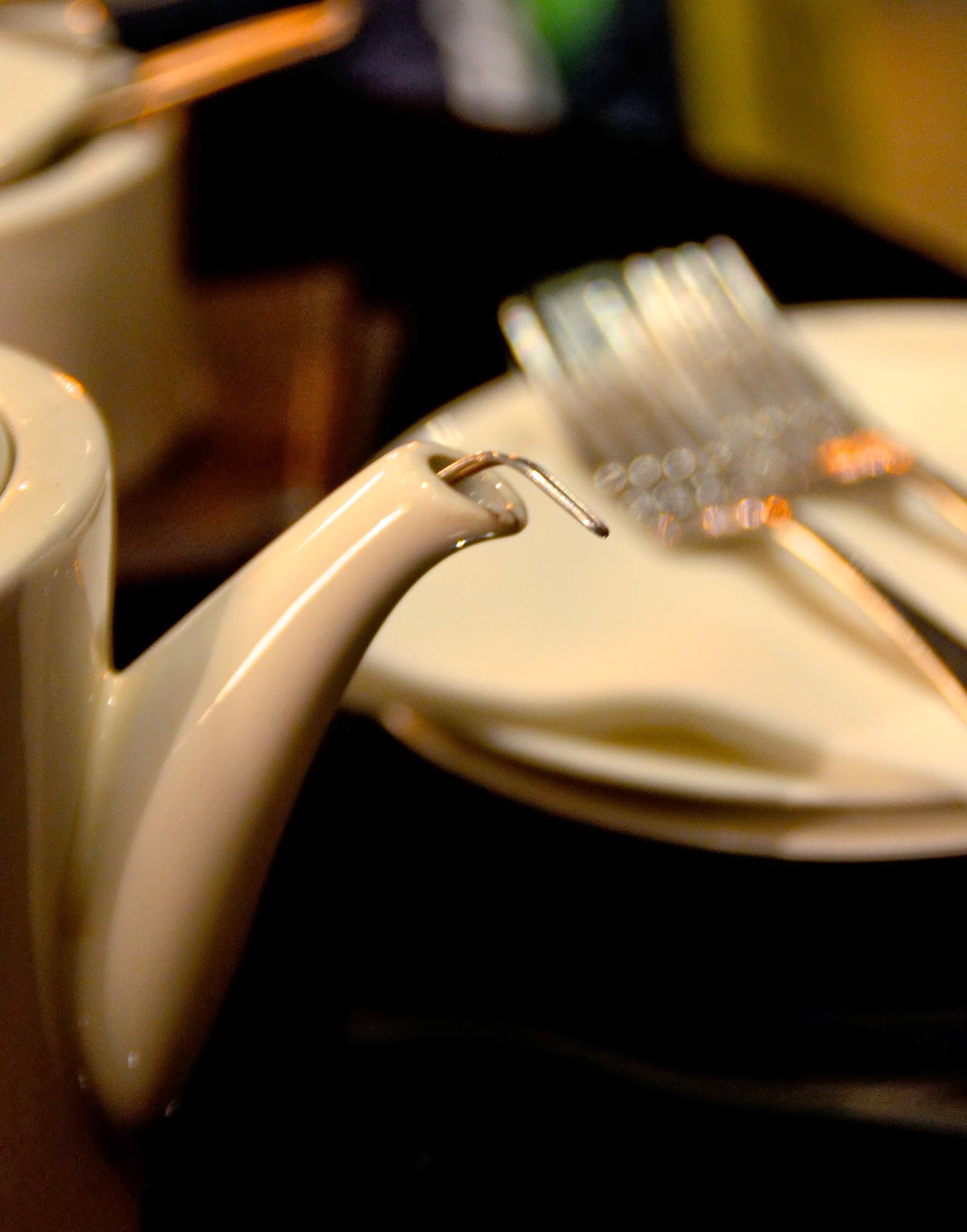(Terraced homes in Holland Park. All photos by LBG, December 2013.)
One of the most fascinating aspects of London is that it's a layer cake of history. The city doesn't seem to grow up as much as it seems to "grow over": Roman foundations are covered with medieval cobblestones which are then overlaid with Victorian brickwork. Manor estates turn into Rococo pleasure gardens which turn into Edwardian hospital grounds. No matter where your interests or passions lie -- in the Romans, Tudors, Bloomsbury bohemians or even Sex Pistols -- the footprints of every culture are still there, you just have to know where to look.
Below, three fantastic Victorian-era destinations that will make you feel as if you've tiptoed back into the nineteenth century:
1. Paradise, by Way of Kensal
Green
By day, this restored pub is a gastronome's dream with fresh, locally sourced cuisine and one of the best Sunday lunches in London. On weekends, it turns into a nightclub where you're likely to bump shoulders with Kate Moss and Jamie Hince, and also hosts special culinary dinners by the likes of Alex James, Blur bassist turned cheese farmer.
This is the bar in the front room. Coffered ceiling, check. Gray mirrored bar, check. Tufted leather chairs approaching retirement, check.
(Website HERE.)
Design note for the brave: If your walls are peeling, shellac over them.
You're in the main dining room now. Doesn't it have such warmth and energy? Let's break it down: Gray walls. White floorboards. Gilt-frame paintings. Vintage birdcage pendant lamps. Flea market antique furniture. Secondary colors: Gold, black, cabernet, burgundy, brown.
I ordered a traditional pork roast with Yorkshire pudding and greens. Delicious. It nearly made a man out of me.
I don't know if the Paradise was ever a private residence, but it certainly feels like it. In addition to the pub and restaurant on the ground floor are a variety of rooms upstairs for dining and drinking in. I love how the stairwell has cleverly been transformed into a nook for entertaining, don't you? That area is usually such a dead space.
Upstairs, the tarnished glass chandeliers, shaggy greenery, and general attitude of crumbling glamour lend a distinctive Miss Havisham quality to the place...and I mean that in the best possible way, of course.
Only one of the rooms upstairs was unlocked, but if this one is representative of the others, a return visit is definitely in order.
Now about that name. It refers to a line in a G. K. Chesterton poem called "The Rolling English Road" about how the Roman roads were all straight and precise but the Englishman, usually being drunk, created reeling and rolling ones. Funny, right? The Paradise is next to the famous Victorian cemetery, Kensal Green, final resting place for writers like William Thackeray, Anthony Trollope and Harold Pinter.
For there is good news yet to hear and fine things to be seen,
Before we go to Paradise by way of Kensal Green.
~G. K. Chesterton, "The Rolling English Road"
We walked through the cemetery afterwards and I spied this haunting tombstone. "My heart lies in England, too," I thought to myself.
For there is good news yet to hear and fine things to be seen,
Before we go to Paradise by way of Kensal Green.
~G. K. Chesterton, "The Rolling English Road"
We walked through the cemetery afterwards and I spied this haunting tombstone. "My heart lies in England, too," I thought to myself.
(Kensal Green Cemetery, 2013.)
2. Tea at the St. Pancras Hotel
If you watch "Downton Abbey" then you're familiar with St. Pancras Station -- Lady Edith is always alighting here to visit her paramour. The station, designed in 1863, has recently undergone a 2oo million pound renovation and the former Midland Hotel inside has been magnificently restored. Whether you're catching a train or not (the Eurostar leaves from here), it's worth popping your head in--if only to say you've visited one of the greatest Victorian buildings in London.
(Hotel website HERE.)
I oohed over the colorful Gothic-inspired halls with their fleur-de-lis wallpaper, carved marble arches and ornamental tile work...
...and Luca aahed over the absolutely gigantic train shed (my camera only captures about an eighth of it). If you've read the book The Invention of Hugo Cabret, then you know a child can never look at a train station clock the same way again.
We had a restorative pot of tea in the Booking House Bar...
...where I discovered the most amazing tea strainer I've ever seen.
Look, it's a tiny umbrella-shaped bristle that fits into the spout of your teapot and prevents the leaves from coming out with the tea. Why don't they sell these in America?
3. The Charles Dickens House
I visited the Dickens House years ago but it's undergone a renovation so I was eager to see it again, and since my son Luca loved reading "The Christmas Carol" in school last year, I was hopeful there wouldn't be any foot-dragging.
Before the redo, the museum was drab and fusty (and I say that as a fervent Dickens fanatic). You had to peer across roped doorways to see anything. Now, the entire house is open, and they've annexed the house next door and opened a café and tiny gift shop. Period Victorian furniture has been added to Dickens' original possessions to give the house a cozy lived-in feel.
(Website HERE.)
The master bedroom was dark and still, a perfect sanctuary after a long day of writing.
When we went downstairs, there was a group of school children getting dressed up as scullery servants to "assist" with dinner preparations.
I don't envy the woman who had this job.
Why, thank you, Charles. How kind of you to offer me a hand up these stairs.





















































